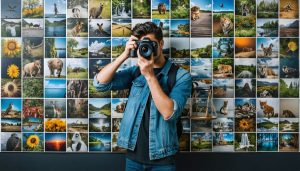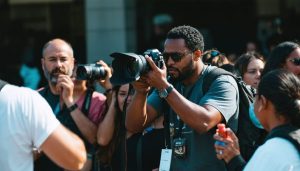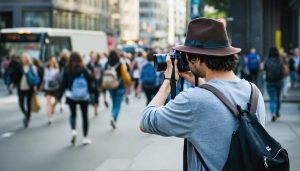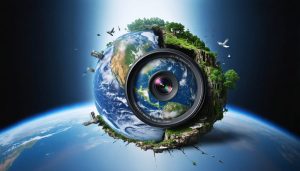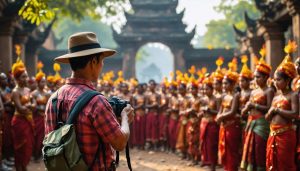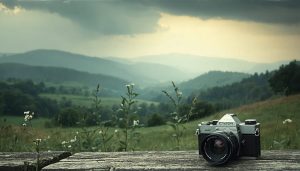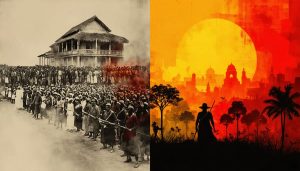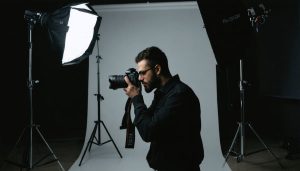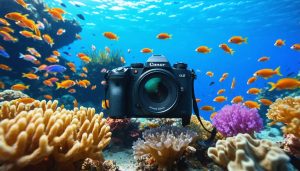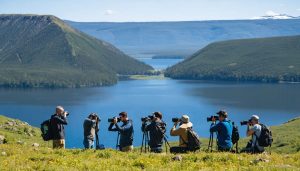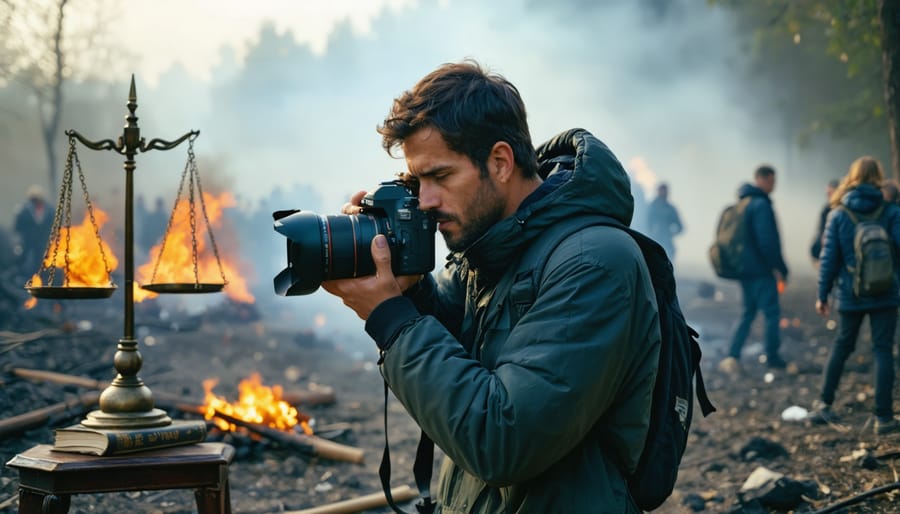
In an era where manipulated images flood social media feeds, mastering the critical principles of photojournalism has never been more crucial. Every frame captured holds the power to shape public opinion, influence policy decisions, and document history. Yet this power comes with profound responsibility. Photojournalists serve as society’s visual truth-tellers, navigating complex ethical landscapes while racing against deadlines and competing pressures. Whether documenting conflict zones, natural disasters, or daily life, their choices – from composition to caption writing – can impact lives and shape narratives for generations. Today’s digital tools have expanded creative possibilities but also multiplied ethical challenges, demanding unprecedented vigilance in maintaining journalistic integrity. As technology evolves and misinformation proliferates, understanding and applying ethical guidelines becomes not just professional protocol, but a moral imperative for anyone wielding a camera in service of truth.
The Core Principles of Ethical Photojournalism
Accuracy and Truth in Visual Reporting
In photojournalism, accuracy and truth aren’t just ideals – they’re fundamental ethical responsibilities in photography that shape public perception and historical record. When capturing moments of significance, photographers must resist the temptation to alter or manipulate images beyond basic exposure and color corrections.
The rise of digital editing tools has made image manipulation easier than ever, but this convenience comes with increased responsibility. Ethical photojournalists should only make adjustments that maintain the image’s authenticity – such as basic cropping, minor exposure corrections, and color balance adjustments that reflect the actual scene.
What’s strictly off-limits? Adding or removing elements, excessive retouching that alters reality, or staging scenes for dramatic effect. These manipulations violate the trust between photographer and viewer, potentially undermining the credibility of photojournalism as a whole.
When documenting events, consider using RAW format and maintaining detailed records of any post-processing steps. This transparency helps establish credibility and allows others to verify the authenticity of your work. Remember, your role is to document reality, not create it – the power of photojournalism lies in its ability to show truth, even when that truth is uncomfortable or challenging.
Respect for Human Dignity
At the heart of ethical photojournalism lies respect for human dignity. When photographing subjects, especially in vulnerable situations, photographers must prioritize the well-being and autonomy of their subjects above getting the perfect shot. This means seeking explicit consent whenever possible, particularly in non-public settings or when photographing minors.
Consider approaching potential subjects with transparency about your intentions and how their images will be used. Explain where the photos might appear and allow them to decline or set boundaries. In crisis situations or moments of grief, be especially mindful of maintaining a respectful distance and reading non-verbal cues that indicate discomfort.
Photographing with dignity also means avoiding sensationalism or exploitation. Frame your subjects in ways that preserve their humanity rather than reducing them to symbols of suffering or hardship. This might mean waiting for a moment that shows resilience rather than just despair, or choosing angles that don’t diminish the subject’s stature.
Cultural sensitivity plays a crucial role here. Research and respect local customs regarding photography, personal space, and privacy. Some cultures have specific beliefs about being photographed, and understanding these nuances helps build trust and ensures ethical practice.
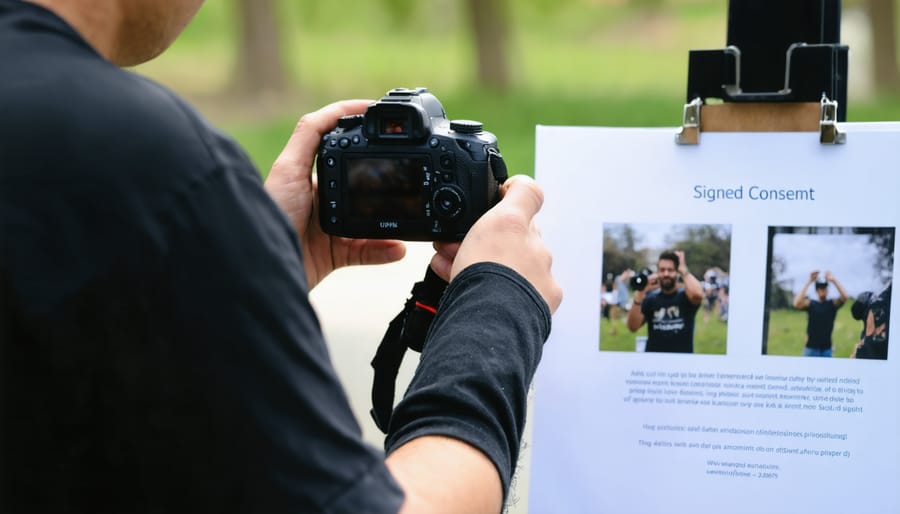
Safety Protocols in Conflict Zones
Physical Safety Measures
When covering sensitive situations or high-risk events, your physical safety should always be the top priority. Start with proper protective gear – a sturdy helmet and high-visibility vest are essential when covering protests or conflict zones. Invest in quality protective cases for your equipment, ensuring your cameras and lenses are shielded from both environmental hazards and potential impacts.
Always work with a partner when possible, especially in volatile situations. This buddy system not only provides an extra set of eyes but also ensures someone can call for help if needed. Maintain awareness of your surroundings and establish clear exit routes before beginning your coverage. Keep emergency contacts readily available, including local authorities and medical facilities.
Your camera gear choices can impact safety too. Consider using lighter equipment in dangerous situations to maintain mobility. Keep backup batteries and memory cards in easily accessible pockets, and use camera straps that can quick-release if they become entangled. Weather-sealed cameras are worth the investment when working in challenging conditions.
Remember that no photo is worth risking your life. Develop risk assessment skills and trust your instincts – if a situation feels unsafe, step back. Maintain regular communication with your editor or team, and ensure they know your location and planned movements. Consider taking a first aid course and carrying a basic medical kit – these skills and supplies can prove invaluable in emergency situations.
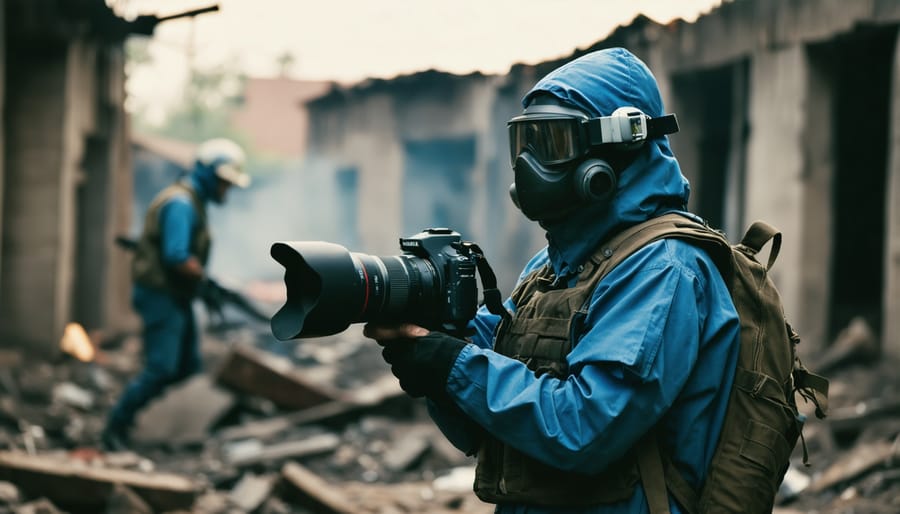
Ethical Decision-Making Under Pressure
In the fast-paced world of photojournalism, photographers often face split-second decisions that can have lasting ethical implications. When covering breaking news, disasters, or conflicts, the pressure to capture compelling images must be balanced against moral responsibilities and human dignity.
Consider a scene of civil unrest: while dramatic photos of confrontations might generate more attention, responsible photographers must assess whether their presence could escalate tensions or put subjects at risk. The key is maintaining awareness of how your actions impact the situation you’re documenting.
Safety should always be the primary concern – both for the photographer and subjects. This means knowing when to step back from a dangerous situation, even if it means missing a potentially powerful shot. It’s crucial to remember that no photo is worth putting lives at risk.
Ethical decision-making under pressure requires developing a strong moral compass before entering challenging situations. This includes:
– Establishing personal boundaries and non-negotiable ethical principles
– Having a clear understanding of your publication’s guidelines
– Building relationships with local communities and authorities
– Preparing contingency plans for various scenarios
When faced with ethical dilemmas in the field, photographers should quickly assess: Will publishing this image cause harm? Does it serve a genuine public interest? Is there a less intrusive way to tell the story? These questions become your ethical framework when split-second decisions are required.
Digital Ethics and Image Manipulation
Acceptable vs. Unacceptable Editing
In photojournalism, maintaining visual integrity requires clear boundaries between acceptable and unacceptable editing practices. Acceptable editing typically includes basic adjustments that enhance image clarity without altering the fundamental truth of the scene. These include:
• Moderate exposure corrections
• Basic color temperature adjustments
• Minor contrast enhancement
• Dust spot removal
• Minimal cropping that doesn’t change context
• Basic sharpening
However, certain editing practices cross ethical boundaries and are considered unacceptable in photojournalism:
• Adding or removing elements from the image
• Excessive color manipulation that changes the mood
• Heavy shadows/highlights adjustment that obscures details
• Selective editing that emphasizes certain elements
• Combining multiple exposures (except for HDR in extreme lighting)
• Using filters that dramatically alter the scene’s appearance
The key principle is simple: if an edit makes viewers question the authenticity of the moment captured, it’s likely crossed the line. Think of acceptable edits as restoration work – bringing the image closer to what the human eye actually saw. Any manipulation that creates a new reality or misleads viewers about the actual circumstances violates photojournalistic integrity.
When in doubt, transparency is crucial. Publications should maintain clear editing guidelines and be prepared to disclose any significant post-processing work to maintain credibility with their audience.

Digital Authentication Methods
In today’s digital age, maintaining the integrity of photojournalistic images is crucial, and several authentication methods have emerged to help verify the authenticity of photographs. Digital signatures and metadata embedding serve as the first line of defense, allowing photographers to mark their original work with unique identifiers that can’t be easily tampered with.
Blockchain technology has revolutionized image authentication by creating an immutable record of when and where a photo was taken, along with any subsequent edits. This provides a transparent chain of custody that editors and audiences can verify. Many professional photographers now use specialized software that automatically logs camera settings, GPS coordinates, and timestamps directly into the image file.
Content-aware detection tools have become increasingly sophisticated, capable of identifying common manipulation techniques such as clone stamping, excessive retouching, or composite images. These tools analyze pixel patterns and inconsistencies that might not be visible to the naked eye.
Major news organizations have implemented rigorous verification protocols, including image authentication software and standardized metadata requirements. Photographers can also utilize secure image management systems that track every modification made to a photo from capture to publication.
For individual photographers, implementing a consistent workflow that includes RAW file preservation, detailed documentation, and secure backup systems helps maintain image authenticity. Regular calibration of equipment and standardized editing procedures further support the credibility of their work.
Privacy and Consent in the Digital Age
Subject Rights and Permissions
Obtaining proper consent and respecting subject rights are foundational elements of ethical photojournalism. When photographing individuals, you must understand both legal requirements and moral obligations. In public spaces, while you may have the legal right to photograph people, ethical practice often demands going beyond mere legality.
Always seek explicit permission when photographing subjects in private settings or vulnerable situations. This is particularly crucial when working with minors, where parental consent is typically required. In crisis situations or during moments of grief, exercise extra sensitivity and respect people’s right to privacy, even if they’re in public spaces.
Model releases are essential for commercial use of images, but they’re also valuable documentation of consent in photojournalism. These should clearly state how and where the images will be used. Be transparent about your intentions and ensure subjects understand the potential reach and impact of their images in today’s digital age.
Cultural sensitivity plays a vital role in subject permissions. Different cultures have varying attitudes toward photography, and some communities may have specific protocols or restrictions. Research and respect these cultural norms before photographing in unfamiliar settings.
Remember that consent can be withdrawn at any time. If a subject changes their mind about an image’s use, respect their wishes whenever possible. This builds trust and maintains the integrity of both the photographer and the profession. Always maintain detailed records of permissions and agreements to protect both yourself and your subjects.
Social Media Considerations
Social media has revolutionized how photojournalistic images spread, bringing both opportunities and ethical challenges. When sharing images on platforms like Instagram, Twitter, or Facebook, photographers must consider the immediate and far-reaching impact of their work.
First, consider the speed at which images can go viral. What might seem like a powerful moment captured in the field could be stripped of its context within minutes, potentially misleading viewers or causing harm to the subjects. Always provide accurate captions and necessary context when sharing images on social platforms.
The issue of consent becomes even more critical in the digital age. While traditional media had limited reach, social platforms can expose subjects to global scrutiny instantly. Before posting, consider whether your subjects understood the potential scope of online distribution. This is particularly important when photographing vulnerable individuals or sensitive situations.
Digital manipulation filters and editing tools available on social platforms present another ethical consideration. While basic adjustments are generally acceptable, using platform-specific filters or heavy editing can compromise the authenticity of photojournalistic work. Maintain transparency about any post-processing performed on your images.
Remember that online engagement metrics shouldn’t drive ethical decisions. The pressure to get more likes or shares can tempt photographers to sensationalize their work or cross ethical boundaries. Stay true to journalistic principles regardless of potential viral appeal.
Finally, be mindful of platform-specific guidelines while maintaining your ethical standards. Different social networks have varying policies about sensitive content, but these shouldn’t override your professional judgment about what’s right to share.
As we’ve explored throughout this article, ethical photojournalism remains a cornerstone of responsible visual storytelling in our increasingly digital world. The ethical impact of photography extends far beyond simply capturing moments – it shapes narratives, influences public opinion, and can profoundly affect the lives of those we photograph.
The principles we’ve discussed – from obtaining proper consent and maintaining authenticity to respecting cultural sensitivities and protecting vulnerable subjects – form the foundation of responsible photojournalism. In today’s fast-paced digital landscape, where images can spread globally within seconds, these ethical considerations have become more crucial than ever.
Remember that ethical photojournalism isn’t just about following a set of rules; it’s about developing a moral compass that guides every decision we make behind the lens. Whether you’re covering breaking news, documenting social issues, or telling personal stories, your commitment to ethical practices helps maintain the integrity of our profession and the trust of our subjects and viewers.
As technology continues to evolve and new challenges emerge, staying informed and adaptable while holding firm to these core ethical principles will ensure that photojournalism remains a powerful and responsible medium for truth-telling. Let’s continue to use our cameras not just to capture images, but to make a positive difference in the world.

